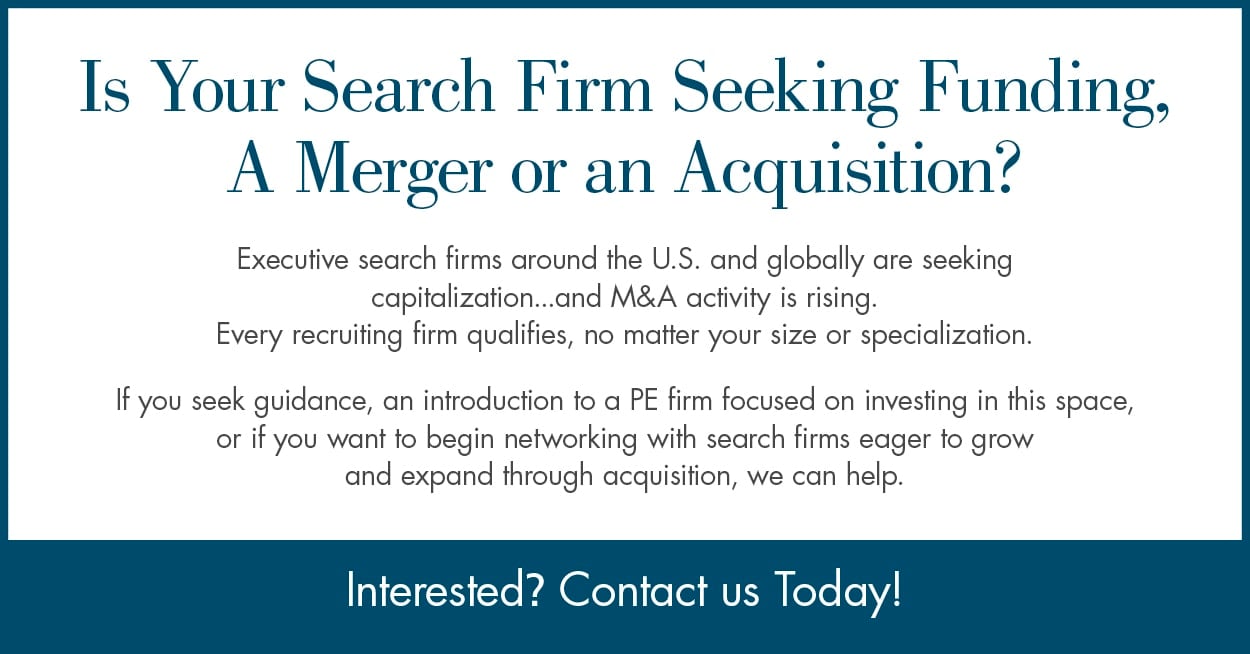The Importance of Diversity and Inclusion in the Workplace

October 26, 2022 – Diversity and inclusion (D&I) programs have been vital to smart companies that want to attract and retain the best talent. However, it’s the lack of such efforts at some organizations that have been making headlines lately in the business press, according to a recent report from Hanold Associates HR & Diversity Executive.
D&I programs are largely ineffective without a culture that drives and supports them. Hanold Associates has been watching business after business come under fire for mistakes that highlight a lack of understanding, sensitivity, or strong ethics. Consider, for example, some of the recent media coverage about Uber and its culture-related issues.
“Aside from just being the right thing to do, having a company culture that’s accepting, supportive, diverse, and inclusive results in better business performance,” the Hanold Associates report said. “Diverse teams inspire and motivate innovation and creativity. This in turn helps organizations attract, engage, and inspire the best talent. To drive these programs, organizations need strong leaders to ensure the company culture supports D&I goals day in and day out.”
When hiring heads of D&I, Hanold Associates notes that they expect these individuals to have the traits of most other key HR and operational executives: strong business acumen, grit, willingness to be vulnerable, effective communication skills, and so on.
According to Hanold Associates, the most distinctive D&I leaders have the wherewithal and the energy to lead programs that make a noticeable impact. They’re excited and that passion is infectious to others in the organization.
“Few are career-long D&I practitioners but have led other aspects of the business driving transformation and change,” the report said. “This gives them a deeper understanding of how to build programs that will connect with employees across the business.”
Hanold Associates also says that these leaders are always learning. “They are voracious readers outside of work and fuse their vocation with avocation, becoming smarter in the space,” the report said. “The workplace and the world continue to change rapidly. D&I leaders must be at the forefront, making sure their organization stays up to par with a culture that supports its vision and mission.”
Top D&I leaders are also strong relationship people. “They have exceptional influencing capabilities, enabling them to inspire others,” the report said. “They know that company culture doesn’t exist in a vacuum and use their influence to make a positive impact.”
Diversity Experts Share Thoughts
Val Lopez and Pamela Culpepper are partners with Hanold Associates HR & Diversity Executive. Ms. Lopez specializes in recruiting executive-level HR and diversity, equity, and inclusion leaders. She has over a decade of experience in rapid-growth, private equity-backed SaaS businesses, specializing in M&A integrations and change management. She is especially strong in translating strategy to action, particularly with respect to managing change initiatives and designing and implementing DEI programs. Prior to joining Hanold Associates, Ms. Lopez was global head of employee engagement and inclusion/VP of DEI at Cision.
Ms. Culpepper focuses on leadership development, diversity, and human sustainability strategies. She has extensive experience in coaching and advising C-level executives, senior-level functional leaders and HR leaders. She serves as an advisor and counsel to CEOs and boards of directors on matters of diversity, equity, and inclusion. Before joining Hanold Associates, Ms. Culpepper co-founded Have Her Back LLC., a female-owned and led culture consultancy focused on advancing equity for all.
The recruiters recently joined Hunt Scanlon Media to discuss the meaning and importance of diversity and inclusion as well as how HR leaders are helping shape the future for organizations!

According to Bain & Company, 50 percent of all employees say they would consider switching jobs to work for a company with a more built-out DEI strategy or greater pay equity. Why is the so important to executives today?
Lopez: Diversity, equity, and inclusion is an integral component of an organization’s employer brand, but only when applied in a credible, authentic way. It’s easy for organizations to make bold promises and statements around their DEI efforts when recruiting top talent, but those statements will only backfire when employees join and experience something much different. In today’s job market, candidates have their choice of companies to work for and their decision often comes down to fulfilling a sense of purpose and belonging in their next role. Executives need to be well versed in the cultural and societal changes impacting their employees’ lives today. Leaders should not only understand how they can best support their employees, but offer the benefits, resources and development opportunities that will keep them engaged and invested.

Culpepper: A number of organizations have DEI aspirations that are often less realized than what is communicated. Many organizations have the same unmet goal for accelerating diverse representation, and many of the DEI activations are performative at best. If an employee is currently working in an organization where the talk and walk are not congruent, they are looking for proof of action and progress from their potential employer to reduce the likelihood that their workplace experience will be “more of the same” if they moved to a new organization. This should be important to executives because the sincerity and subsequently the credibility of their organization’s DEI commitment can have an effect on the choices talented candidates make about joining and about staying.
How are companies leveraging their DEI efforts to attract top talent?
Lopez: There are many ways companies can leverage their DEI efforts to attract top talent, one being “transparency in numbers.” Many organizations have developed and implemented DEI efforts, but what are the actual quantified outcomes and metrics from those efforts? One of the most powerful insights comes out of the 2022 Edelman Trust Barometer Special Report: Trust in the Workplace: To earn employee trust, you must first give them yours. Companies publicly sharing diversity data and social justice investments are signaling to candidates that they are not only dedicated to their DEI commitments but are also transparent in holding themselves accountable. They are “walking the walk,” which candidates are increasingly evaluating in their job search. With transparency comes trust, which is critical in attracting and keeping top talent.
Culpepper: Progressive organizations have made their DEI achievements and results public and are enlisting top talent to help continue the momentum. They have given voice and support to issues that matter to top talent and they can articulate how they are holding their leaders accountable for sustainable results.
From the recruiting side, what are some challenges when trying to present a diverse slate of candidates? How do you overcome these?
Lopez: A challenge in presenting a diverse slate of candidates is when an organization is not ready to interview a diverse slate of candidates. If organizations are making concerted efforts in diversity recruiting, it’s equally important that they have done the training and homework to ensure all candidates are given a fair chance throughout the interview process. Unfortunately, similarity bias (biased in hiring someone who looks or acts like you) is still a very real thing in the workplace and it frequently pops up during interviews. Organizations need to ensure interviewers have gone through DEI training that provides awareness around the various biases that appear in the workplace, as well as cultural knowledge to ensure candidates aren’t penalized due to cultural differences in communication style and body language. Interviewers should also have exposure in interacting with people who differ from them. Another challenge is having unstructured interviews. While conversational interviews may seem like they put candidates at ease, when left unstructured, that opens the door to bias and inequities in the hiring decision. By having structured interviews, every candidate is asked the same set of questions and are evaluated against the same criteria.
“Progressive organizations have made their DEI achievements and results public and are enlisting top talent to help continue the momentum.”
Culpepper: There are two challenges: 1) Lack of a collective understanding of the diverse hiring needs and 2) A competing lens through which “qualified” is viewed; navigating the tension between external diverse hires and “ready now” internal non-diverse talent. Overcoming these challenges requires a fully asserted expectation around diverse hiring as well as important conversations with hiring managers about their accountability in realizing these goals.
Discuss the role that executive recruiters play as day-to-day DEI mediators.
Lopez: An executive recruiter’s role is advocating for historically marginalized leaders who, in the past, haven’t been considered for roles due to antiquated criteria that are inherently biased. It’s coaching organizations to review their selection criteria to ensure they are valid predictors of success in the role, and to think outside the traditional box to encourage consideration of a broader pool of diverse leaders.
Culpepper: The executive recruiter’s role is to first help the hiring manager (and others) gain clarity on what a successful candidate looks like in the role, separate fact from fiction when evaluating candidates, and to manage the expectations of both the candidate and the hiring firm on outcomes.
Related: Hanold Associates Recruits Chief People and Culture Officer for Major League Baseball
Contributed by Scott A. Scanlon, Editor-in-Chief; Dale M. Zupsansky, Managing Editor; and Stephen Sawicki, Managing Editor – Hunt Scanlon Media












